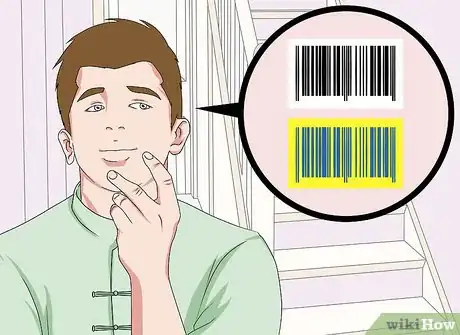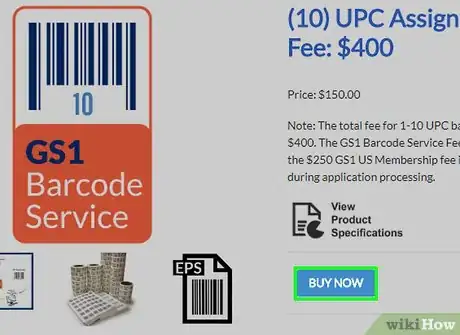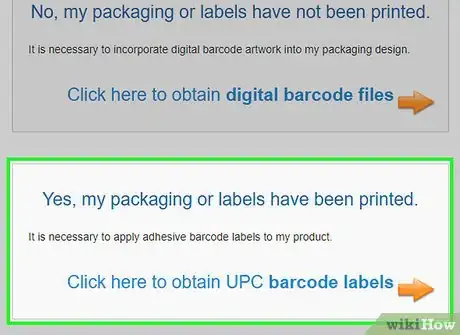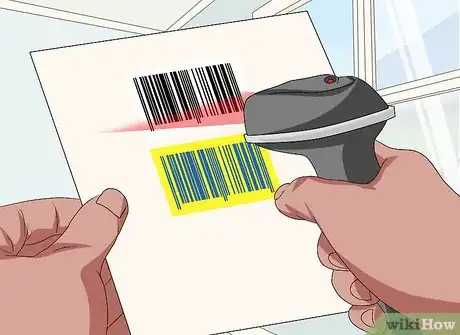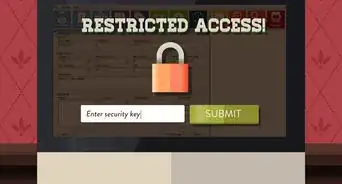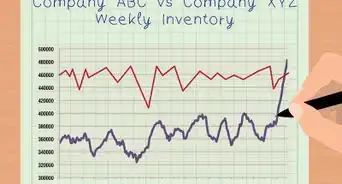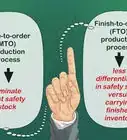This article was co-authored by wikiHow Staff. Our trained team of editors and researchers validate articles for accuracy and comprehensiveness. wikiHow's Content Management Team carefully monitors the work from our editorial staff to ensure that each article is backed by trusted research and meets our high quality standards.
This article has been viewed 26,534 times.
Learn more...
You’ll need to get Universal Product Codes (UPCs) for your products if you plan on selling through major retail vendors. UPCs are used for tracking and inventory purposes, and they’re distributed through a nonprofit entity called GS1. These 12-digit codes found under barcodes consist of a company prefix, an Item Reference Number, and a check digit. Once you fill out an application through GS1, pay a fee, and choose the right barcode for your products, you’ll be ready to take your business to the next level!
Steps
Applying For a UPC
-
1Figure out how many products you will need UPCs for. The most important thing to understand is that each variation of each product you sell requires a unique barcode. You’ll need to determine exactly how many barcodes you need before you fill out the GS1 application.
-
2Choose the GS1 option based on your barcode needs.
- Single GTIN: If you have only a few products that need barcodes, this might be the most cost-effective option for your company. Single GTINs are a great option for small companies that are looking to quickly list their products for sale. You can license a single GTIN for $30 and there is no annual renewal fee. (Global Trade Item Numbers (GTINs) are encoded into UPC barcodes.)
- GS1 Company Prefix: A GS1 Company Prefix allows businesses to get multiple barcodes at a single time, as well as identify locations, mixed cases, create coupons, and create higher levels of packaging like a case or pallet. GS1 Company Prefixes are great for companies with growing product lines. You can license a GS1 Company Prefix that comes in different “capacities” representing the maximum number of unique products you can identify with that license. As long as you renew your Membership every year, your product data will remain linked to your company information.
Advertisement -
3Fill out the application and pay online. The GS1 check out process has 3 simple steps:
- Select a single GTIN or GS1 Company Prefix and put them in your cart. Provide your contact information
- Pay
- You will get a welcome email from GS1 US within minutes. It includes all the important information you need to get started, including access to myGS1 US—your online member center. https://www.gs1us.org/upcs-barcodes-prefixes/get-a-barcode
Ordering Barcodes
-
1Choose a design for your barcode. The safest option for easy scanning is black bars on a white background, but you can also choose blue bars and yellow or red backgrounds. The barcode itself should be between 1.1875 in × 0.813 in (3.016 cm × 2.065 cm) and 2.92 in × 2.04 in (7.4 cm × 5.2 cm), with unprinted space to the left and right for easy scanning.[1]
-
2Buy digital barcodes if you haven’t finalized your product’s packaging. Use the GS1 website to order digital barcodes with the UPCs you chose. You will receive them in .eps format, which can then be used in your packaging design using an application like Adobe Photoshop.[2]
- The barcode should be located somewhere on the package that will remain flat and unwrinkled for easy scanning. Barcodes are usually placed in the lower right-hand corner of the back of the package.[3]
- Changing the size of the barcode may affect how well it scans. To be on the safe side, double-check to make sure you get the size you need.[4]
-
3Order physical barcodes if you have already printed your packaging. You can order these through the GS1 website. They will come in the form of adhesive labels, which you can then physically apply to all of your products.[5]
- Physical barcode labels are more expensive than digital ones, so you should only choose this option if your packaging materials have already been produced.
- Your labels should be placed in the same location on all of your products. Choose a place that will be easy to scan and unlikely to wrinkle during shipping and handling.
-
4Verify your barcodes. Before you send your products off to a retailer, you’ll want to make sure all your barcodes scan the way they’re supposed to. There are several certified services that will verify your barcode for you for a fee. You can find a full list here: https://www.gs1us.org/tools/solution-provider-finder/solution-provider-finder/verify-a-barcode.
- You may also wish to buy your own verification equipment through GS1, such as the GS1 Conformance Standard Test Cards.[6]
Warnings
- There are several services that sell used UPCs, but this is a risky choice. While it may be cheaper, most major retailers do not accept UPCs unless the company prefix matches the company using it.[7] It’s better to pay a little more rather than risk wasting your money or limiting yourself.⧼thumbs_response⧽
References
- ↑ https://www.gs1-us.info/faq-upc-codes/
- ↑ https://www.gs1-us.info/upc-barcode/
- ↑ https://www.gs1us.org/upcs-barcodes-prefixes/get-started-guide/4-place-barcodes-on-products
- ↑ https://www.gs1us.org/upcs-barcodes-prefixes/get-started-guide/4-place-barcodes-on-products
- ↑ https://www.gs1-us.info/upc-barcode/
- ↑ https://www.gs1us.org/upcs-barcodes-prefixes/get-started-guide/5-test-verify-printed-barcodes
- ↑ https://www.gs1-us.info/gs1-company-prefix/
